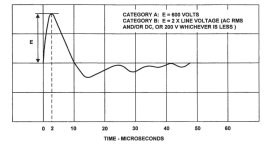Update:
I've been meaning to give an update on my situation, but have been putting it off. Dan reached out to me so, I'll update publicly.
I received my new replacement diode pair & heat sink in the mail last week, and went to install it the next day.
Side note: I recently moved 3 hours away from where the project is located.
Due to the size of the heat sink, I spent about 3 hours getting everything installed. It was late at night and things were looking hopeful for a first flight the following morning.
I went to do one last "torquing" of the terminal screws, and like a sign from above, I felt a sudden 'pop' as the diode housing material broke away, leaving a flimsy terminal post behind!
I shouted some 'words', but after a few minutes my tunnel vision opened on this whole Diode situation.
Many of you had me not feeling very confident in the use of a diode. It is the last pathway before voltage hits my engine bus. And if it were to fail in a way to where insufficient voltage could reach the bus, then well you know....
After the new diode broke I decided to do away with the idea of both batteries always feeding that bus (see previously posted sketch). Now, Battery one feeds the avionics (vp-x), and Battery two feeds the engine bus.
There is still a cross-feed contactor used so that if either alternator goes down or some other Battery fault, I can close the bus-tie switch and kill either battery master and everything should be fine.
So, the following morning, I modified the wiring per that plan and made my First Flight by 10 AM !





